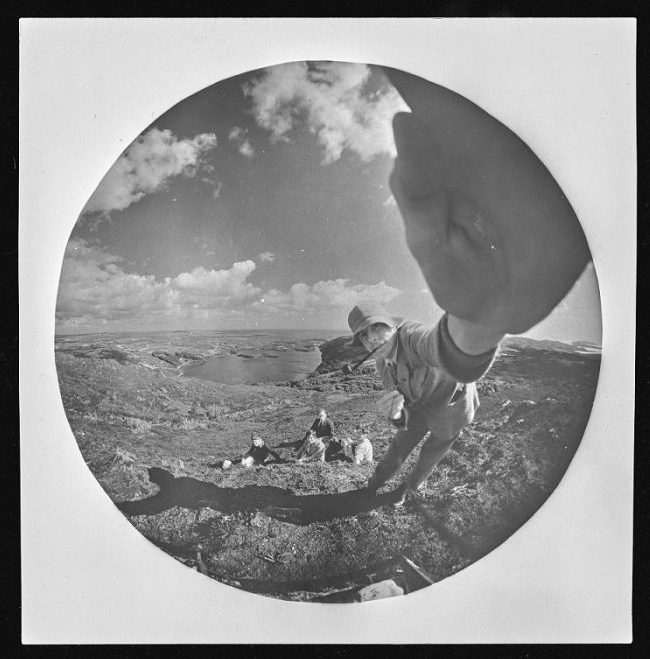
Archive and Modern Manuscripts Image of the Month – the cloud camera
Robert (Robin) Hill was born in 1899. After reading natural sciences, and specializing in chemistry, at Cambridge, he had a successful career in biochemistry, becoming a Fellow of the Royal Society in 1946. Prior to university, Hill was introduced to astronomy which, in turn, led to an interest in meteorology and weather forecasting, a fascination which continued into his early 20s after he had finished his degree.
Weather forecasting in the 1920s relied on reports compiled by unofficial and amateur observers. They could record rainfall, temperature, pressure and other ground level observations easily enough, but the recording of high level atmospheric conditions, required for more detailed forecasting, was difficult. It consisted mainly of written descriptions of cloud formations. By the 1920s trials had been carried out using photography, but a large number of photographs were needed to capture the whole sky. This is where Hill comes back into the picture. He had read a research paper, written in 1906 by Professor R.W. Wood of Johns Hopkins University in the US, describing what Wood called a fish-eye camera. Wood used a bucket of water, a pinhole camera, and a mirrored glass to produce an image that compressed a 180 degree view into a fish’s perspective. Hill thought he could develop this idea to take photographs of clouds, with one image capturing the whole sky. After he graduated in 1922 he had some time on his hands until he obtained a post as a research student and during this period he developed a camera with a bullseye or pinhole lens. He did away with the bucket of water by using a hemispherical glass lens. Hill produced a number of simple cameras consisting of a lens built into a flat wooden box and in 1924, together with commercial camera and lens maker R and J Beck Ltd, had a design patented for the first commercially available fish-eye, or cloud, camera. Despite his increasingly busy biochemistry research work, Hill continued, together with Beck’s help, to refine his design into the 1930s and was involved in correspondence on the subject well into the 1960s. The camera, however, did not have quite the commercial impact hoped for. From the early 1930s meteorologists started using balloon based instruments and, later, newer technologies such as radar, and cloud photography and the role of amateur observers became obsolete.
Hill’s collection of papers, held here in the Department of Archives and Modern Manuscripts, mostly contains records of his work in biochemistry, but there is also a section on the fish-eye lens. There are many examples of Hill’s cloud photography, but there are also a few photographs of other subjects, such as the ceiling of Ely Cathedral, taken to analyse the accuracy of the camera, and various buildings taken as test shots. This one, however, seems to be more of a snapshot of a family holiday, possibly in Scotland.
The catalogue for the collection has recently been published on ArchiveSearch, and the collection is available to view in the Manuscripts Reading Room. Two interesting articles on Hill’s camera, written by John Marriage using his research into the collection, have been published in Photographica World, numbers 173 (Jan 2023) and 174 Feb 2023. Three of Hill’s cameras are held at the Whipple Museum here in Cambridge.

